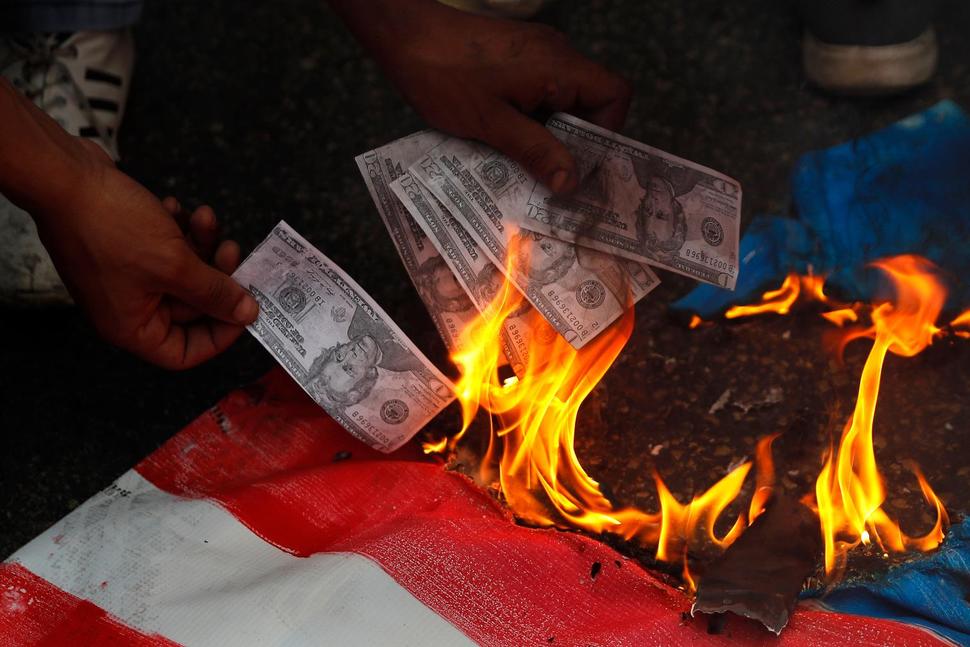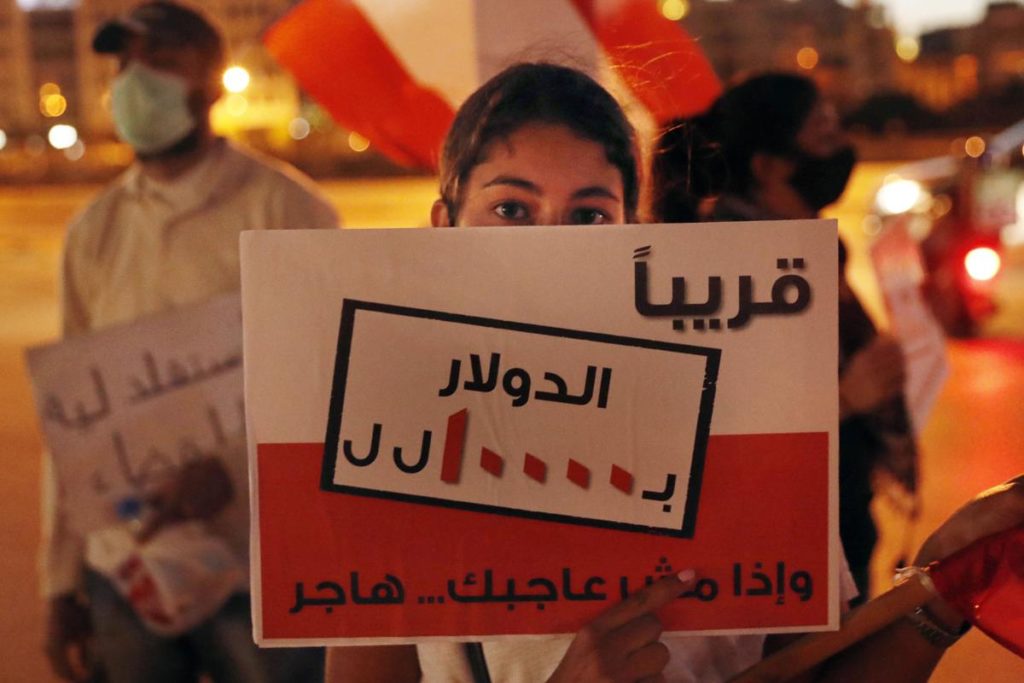The currencies of Lebanon, Iran and Syria have plunged to record lows with the spreads between the parallel black markets and official rates widening and inflation in the countries surging due to decades of economic mismanagement, corruption and international sanctions, the Institute of International Finance said.

Lebanon is facing its worst financial crisis since independence in 1943, and its economy is deteriorating as a result of stalled talks with the International Monetary Fund, which it turned to in May for a $10 billion (Dh36.7bn) rescue package, the IIF said in a report this week.
“Two months of negotiations between the authorities and the IMF to secure financial support have made no significant progress due to the reluctance of vested interest groups in the government and the parliament to implement the urgent fiscal and structural reforms,” the Washington-based organisation said.
The Lebanese pound, pegged to the US dollar since 1998 at 1507.5, has plummeted in the black market, where it reached over 9,000 per dollar over the first 11 days of July. The IIF estimates the spread between the official exchange and parallel market rates has widened to over 400 per cent and inflation is projected to surge to 180 per cent by the end of this year after hitting 56 per cent in May.

The country’s recession will deepen in 2020 due to lack of reforms, it said. Lebanon’s economy is forecast to shrink 12 per cent this year, according to the IMF.
The depreciation in the value of the Lebanese pound is “due to the loss in confidence among currency traders in the ability of the current political establishment to implement a comprehensive economic programme,” the IIF said.
A “significant portion” of imports in Lebanon are being smuggled to neighbouring Syria and the declining foreign currency reserves of the Lebanese central bank “are effectively subsidising the Syrian economy”, the IIF said. “Maintaining implicit subsidies on fuel in the face of rapidly increasing inflation and depreciation of the parallel rate will lead to a much wider fiscal deficit then anticipated in [Lebanon’s] 2020 budget.”
The deterioration of Lebanon’s economy and its financial crisis contributed to a rapid depreciation of the Syrian pound, which has lost 150 per cent of its value against the greenback in the black market, with inflation in the country set to surge 160 per cent by the end of this year, the IIF said.
Syria, which has been under US and EU sanctions since a civil war broke out in 2011, has traditionally relied on foreign currency through more than 300,000 Syrian workers in Lebanon who transfer around $2.5bn (more than 7 per cent of GDP) to Syria annually, the IIF said.
As a result of capital controls in Lebanon and the liquidity crunch in the country, Syria’s access to US dollars has been limited and tighter US sanctions against Damascus that came into effect in June have exacerbated the situation.
Iran, which has also come under tighter US sanctions after president Donald Trump unilaterally withdrew from the Iran nuclear agreement in 2018, will see its economy contract for the third consecutive year, the IIF said. The shrinking of the economy is largely due to the sanctions and the impact of the Covid-19 pandemic.
The economy is projected to contract 6 per cent this year and inflation will remain high at 34.2 per cent in 2020 after hitting 41 per cent in 2019, according to the IMF. The dire situation prompted Iran to request a $5bn loan from the IMF this year.
US sanctions have targeted Iran’s oil industry, its primary source of foreign exchange and limited its access to the international financial system. The tighter penalties by Washington reduced Tehran’s oil exports to fewer than 0.4 million barrels per day from 2.8 million bpd, and eroded confidence in the Iranian rial which has lost more than 400 per cent of its value in the parallel black market against the dollar, according to the IIF.
“Iran’s attempts at exchange rate reunification in 1994, 2002, 2012 and April 2018 have failed, as US sanctions and lack of deep economic reforms have caused the spread between the official and parallel rates to widen,” the IIF said.
The currency has depreciated to 215,000 rials against the dollar in the parallel black market in July 2020 from 64,000 rials in June 2018.
The National

Leave a Reply
You must be logged in to post a comment.